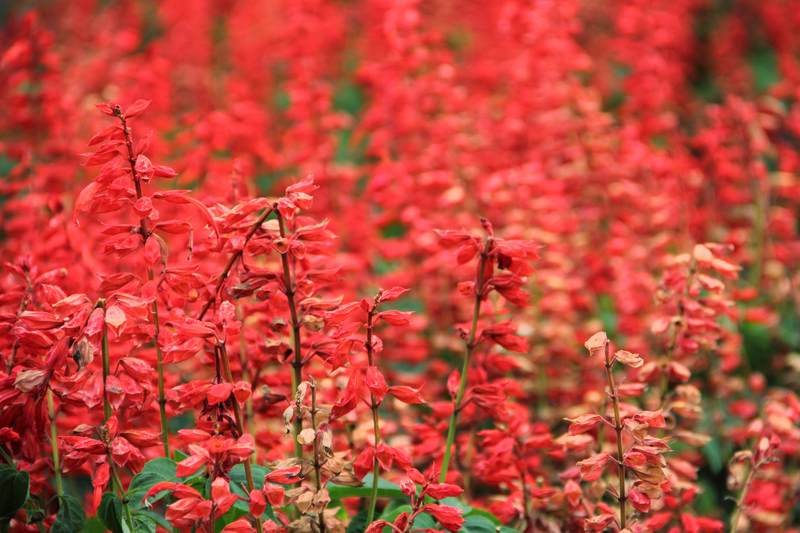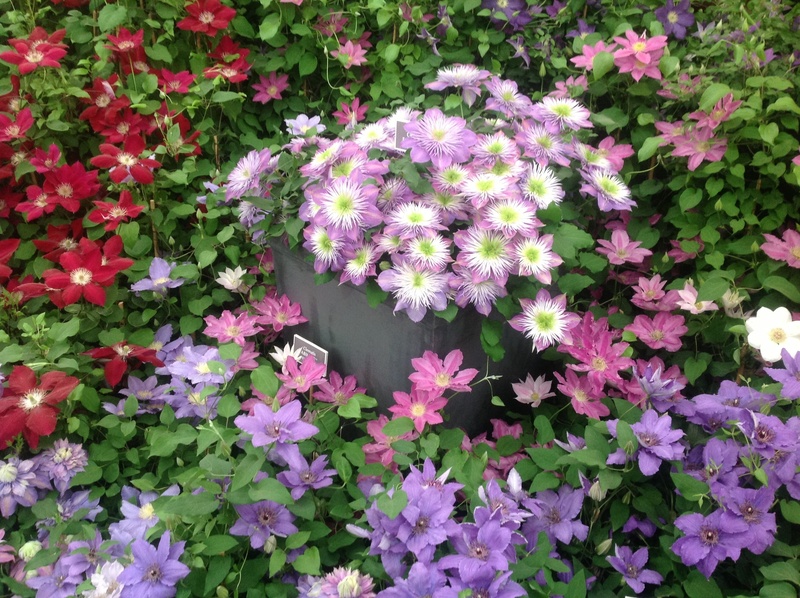Discover the Best Practices for Orchid Care
Posted on 18/05/2025
Discover the Best Practices for Orchid Care
Orchids have captivated gardening enthusiasts with their striking beauty, intricate blooms, and air of exotic elegance. Whether you're a beginner or an avid orchid collector, proper orchid care is essential to help these remarkable plants thrive. In this comprehensive guide, you'll discover the best practices for orchid care, merging expert advice with practical experience--a must-read for anyone looking to cultivate healthy, flourishing orchids at home.
Why Orchids Are Unique Indoor Plants
Before delving into the specifics of how to take care of orchids, it's important to appreciate what makes these flowers so distinct. Orchids belong to one of the largest plant families, Orchidaceae, with thousands of species and hybrids. Their unique physical characteristics and growing requirements set them apart from most houseplants.
- Aerial Roots: Many orchids absorb moisture and nutrients from the air, not just soil or substrate.
- Epiphytic Growth: Most commonly grown orchids in homes (such as Phalaenopsis) are epiphytes--plants that grow on trees or rocks, not in traditional soil.
- Exquisite Blooms: Orchid flowers are highly diverse, sometimes lasting for several months and showcasing vibrant colors and intricate patterns.
Understanding these traits is crucial for mastering effective orchid care and avoiding common mistakes made by new growers.

Top 10 Best Practices for Orchid Care
Follow these proven strategies to enjoy stunning, long-lasting orchids on your windowsill or in your greenhouse:
1. Choose the Right Orchid Variety
Not all orchids require the same care. For beginners, it's wise to start with easy-to-grow types such as Phalaenopsis, Dendrobium, or Cattleya. These are more forgiving and thrive in typical household conditions.
- Phalaenopsis (Moth Orchid): Great for low-light spaces; blooms last for months.
- Dendrobium: Prefers slightly cooler temperatures; produces lots of flowers on tall stems.
- Cattleya: Known for large, fragrant flowers and requires brighter light.
2. Provide Adequate Light
Proper light exposure is the most critical factor for healthy orchids. Most species prefer bright, indirect light but not direct sunlight, which can scorch leaves.
- Place your orchid near an east-facing or shaded south-facing window.
- If you observe dark green leaves, your plant may need more light. Yellowish leaves often indicate too much light.
- Consider supplemental grow lights in low-light environments, especially during winter months.
3. Master the Art of Watering
Overwatering is one of the most frequent causes of orchid decline. Orchids generally prefer to be on the drier side, and their roots are highly sensitive to excess moisture.
- Water your orchid only when the potting media feels dry about an inch below the surface.
- Use lukewarm, distilled, or rainwater--never softened or chlorinated water, which may harm roots.
- Avoid letting the orchid sit in water; ensure the pot has drainage holes.
- Tip: "Soak and drain" is a helpful method: water thoroughly, then let all excess water drain away.
4. Use the Right Potting Medium
Since most household orchids are epiphytes, they need a special well-draining potting mix, not ordinary potting soil. A good orchid substrate may include:
- Bark chips
- Sphagnum moss
- Perlite or charcoal
- Coconut husk chips
Choose a mix that fits your orchid variety and your home's humidity levels. Bark-based mixes dry out faster, great for humid climates, while moss retains more moisture for drier air.
5. Maintain Proper Humidity
Orchids enjoy humidity levels between 50-70%. If your home's air is too dry, especially in winter, take steps to increase humidity:
- Group plants together to create a microclimate.
- Use a humidity tray (a shallow tray with water and pebbles) placed under the orchid pot.
- Mist orchid leaves in the morning, but avoid waterlogging the flowers and crown.
- Set up a small humidifier nearby if necessary.
6. Fertilize Wisely
Orchids require regular feeding, but less is often more. The phrase "weakly, weekly" is a useful rule of thumb for orchid fertilization.
- Use a balanced, water-soluble orchid fertilizer (20-20-20 NPK or similar).
- Dilute fertilizer to half or quarter strength.
- Fertilize every week while the plant is actively growing, and reduce frequency during dormancy.
- Once a month, flush the potting media with plain water to remove excess salts.
7. Repot at the Right Time
Repotting orchids is crucial to prevent root rot and provide fresh nutrients, but timing is key.
- Repot every 1-2 years, or when the potting medium breaks down and becomes compacted.
- The best time to repot is right after the orchid finishes flowering and starts producing new roots or leaves.
- Use a clean, sterilized pair of scissors or pruning shears when trimming dead roots.
8. Temperature Requirements
Most orchids prefer daytime temperatures between 65?F and 80?F (18?C-27?C) and nighttime lows of 55?F to 65?F (13?C-18?C). Maintain a daily temperature drop; this helps trigger blooming in many species.
- Keep away from drafts, radiators, and air conditioners.
- Monitor for signs of cold damage (spotted, soft leaves) or heat stress (wilted, scorched leaves).
9. Prune and Clean Regularly
Regular maintenance will ensure your orchid remains healthy and attractive.
- Remove dead or yellowing leaves and spent flowers with sterilized scissors.
- Wipe leaves gently with a damp cloth to remove dust, improving photosynthesis.
10. Watch for Pests and Diseases
Orchids can be susceptible to mealybugs, spider mites, scale, and fungal diseases. Early detection is crucial for effective orchid care.
- Inspect leaf undersides and roots during watering or repotting.
- Treat infestations promptly with insecticidal soap or neem oil.
- Ensure good air circulation to minimize fungal and bacterial issues.
Common Orchid Care Mistakes to Avoid
Even experienced growers sometimes struggle with orchids. Learning from common mistakes can make all the difference.
- Overwatering: The #1 cause of root rot. Check moisture levels before watering.
- Insufficient Light: Leads to foliage growth but weak/no blooms.
- Neglecting Repotting: Compacted potting mixes suffocate roots and harbor disease.
- Poor Air Circulation: Fosters fungal and bacterial outbreaks.
- Overfertilizing: Burns roots and impedes growth. Remember: "less is more."
Frequently Asked Questions (FAQs) About Orchid Care
How often should I water my orchid?
Watering frequency depends on the orchid species, potting medium, pot size, temperature, and humidity. Generally, once a week is sufficient for most home-grown orchids. Always check the moisture level before adding more water.
Why are my orchid leaves turning yellow?
Yellow leaves can result from overwatering, too much sunlight, or fertilizer burn. Identify the issue by reviewing your orchid care routine and adjust accordingly. Removing severely yellowed leaves prevents possible spread of diseases.
Can I grow orchids outside?
Depending on your climate, many orchids adapt well to outdoor conditions during spring and summer but need protection from direct midday sun, heavy rains, and nighttime cold. Always research your orchid's specific temperature range before moving them outdoors.
How do I get my orchid to bloom again?
To encourage reblooming, provide adequate light, allow temperature fluctuations (especially cool nights), and ensure the plant receives rest after its previous flowering phase. Fertilize regularly during active growth and avoid overwatering.
Essential Orchid Care Supplies Checklist
- Special orchid potting mix (bark, moss, etc.)
- Orchid-specific fertilizer
- Pots with drainage holes
- Spray bottle or mister
- Humidity tray or pebble tray
- Sterilized scissors/pruners
- Grow light (for low-light homes or winter)

Advanced Tips for Expert Orchid Care
Repotting Rare or Large Orchids
If you maintain advanced orchid species or have large specimens, extra care is required. Always repot gently, and consider using a sterilized knife for trimming tough, old roots. Larger orchids may thrive in open-slatted baskets rather than pots, mimicking their natural tree-perching habits.
Creating a Mini-Greenhouse Environment
Orchids flourish in a controlled environment. If you have a large collection, consider constructing a mini-greenhouse, using fluorescent or LED grow lights and a humidity regulator for optimum conditions year-round.
Propagation for Collectors
Some species can be divided when mature, while others propagate via keikis (baby plants). Always use sterile tools, and ensure propagations receive extra humidity and warmth for rooting success.
Conclusion: Growing Stunning Orchids Is Possible for Everyone
Orchid care may seem intimidating at first, but armed with the right knowledge and best practices, anyone can succeed. Remember to choose suitable orchids, provide excellent lighting, avoid overwatering, and stay vigilant for pests and diseases. With patience and dedication, your home can become a showcase for these botanical treasures, rewarding you with spectacular blooms year after year.
Now that you've explored the essential strategies for effective orchid care, get started on your orchid journey and enjoy the beauty and satisfaction these exquisite plants provide. Happy growing!



